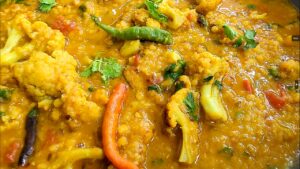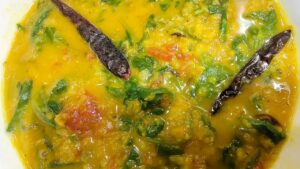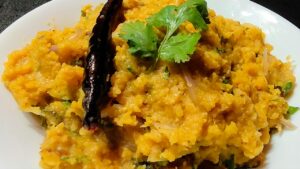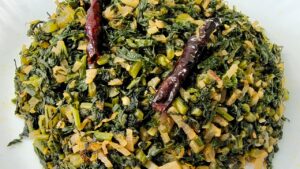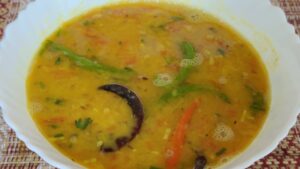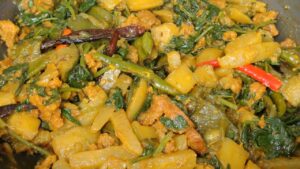Home Style Masoor Dal refers to a preparation of masoor dal, also known as red or pink lentils, in a traditional or typical home-cooked style.
Masoor dal is a popular type of lentil in Indian cuisine, known for its quick-cooking nature and high nutritional value.
Of all lentils, masoor dal (red or pink lentil) is most popular in India. It is a vegan and gluten free dal.
This dal is so delicious that even simple home style preparation will tease your meal cravings.
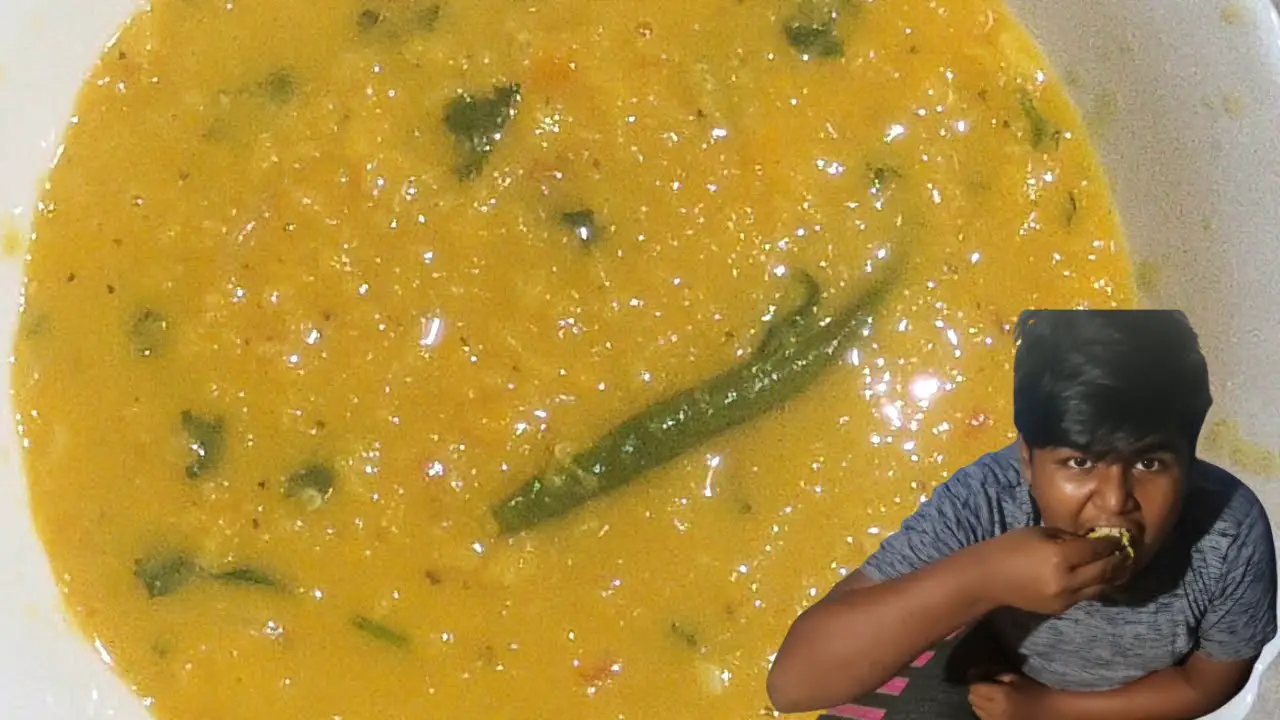
Key Takeaways:
- Before cooking, always rinse the masoor dal thoroughly with water.
- When the cooking starts, skim off the white foam with a ladle and boil the dal with the right amount of water.
- There are many alternative recipes to Home Style Masoor Dal, such as toor, moong, arhar, etc. Each one of these has unique flavors and tastes.
- Maintain the consistency of water, enhance the seasoning, and use fresh coriander leaves.
- Home Style Masoor Dal is a delicious Indian dal recipe that has a sweet, tangy, earthy, and slightly spicy taste.
The Ingredients:
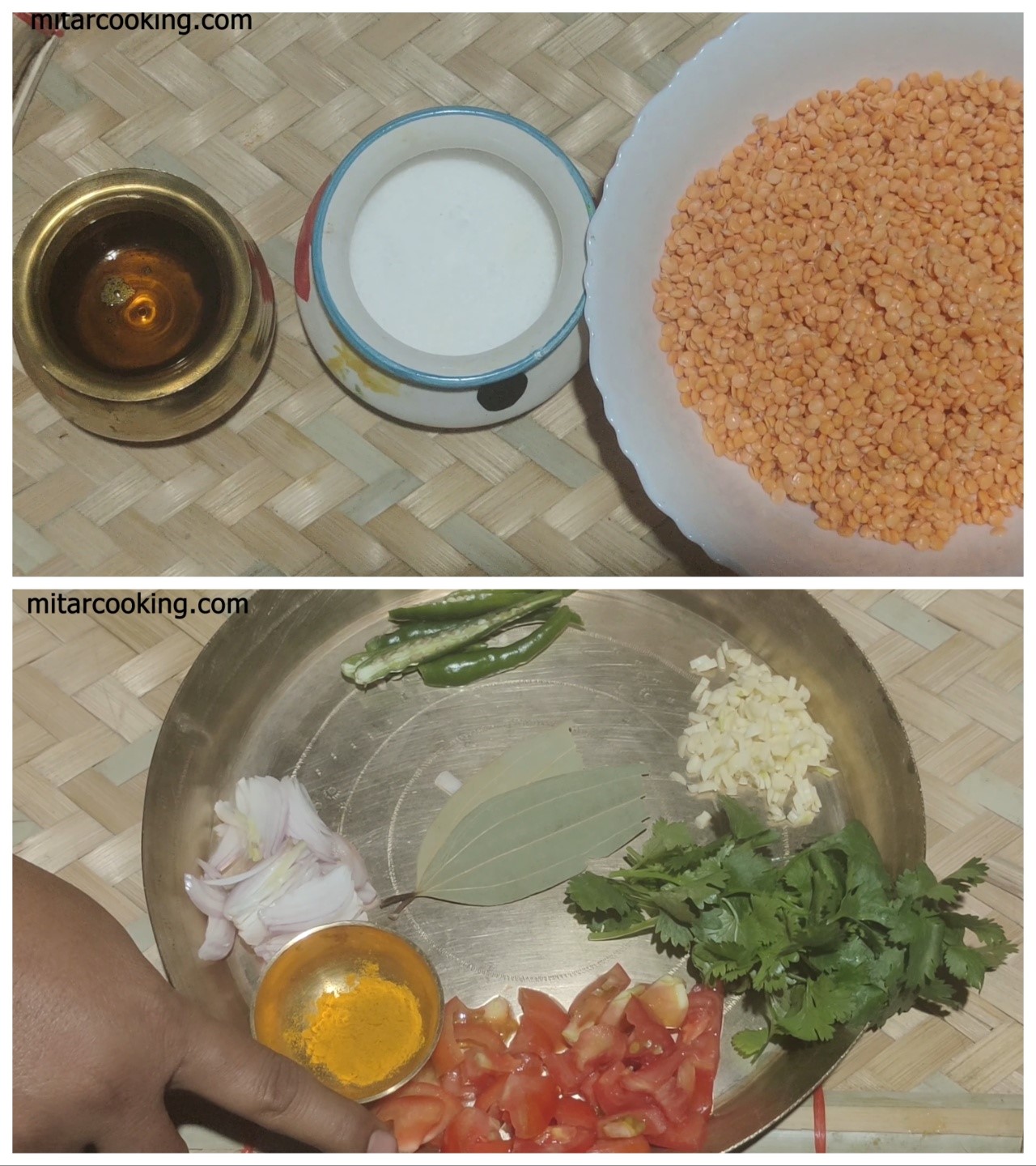
- Pink Lentil: 200 gms (cleaned properly)
- 1 small sized onion (sliced)
- 8-9 cloves of garlic (finely chopped)
- 1 tomato (chopped)
- Bay leaves: 2 pieces
- Green chilies: 4 pieces
- Turmeric powder: 1 Tbsp
- Coriander leaves 1 Tbsp
- Mustard oil 3 Tbsp
- Salt to taste
How to Cook Home Style Masoor Dal (Step by Step Images)?
1. Lighten the chulha or gas stove and place the Kadai on it.
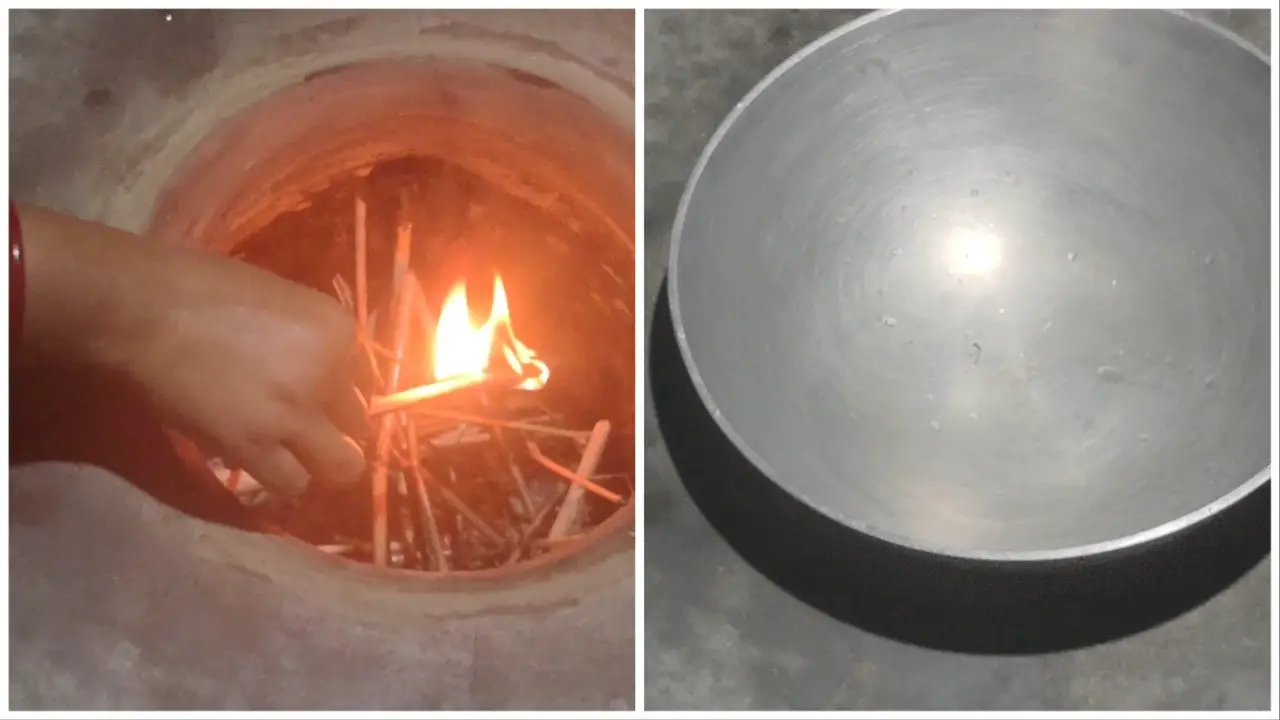
2. Pour 1 tablespoon of mustard oil into a hot kadai.
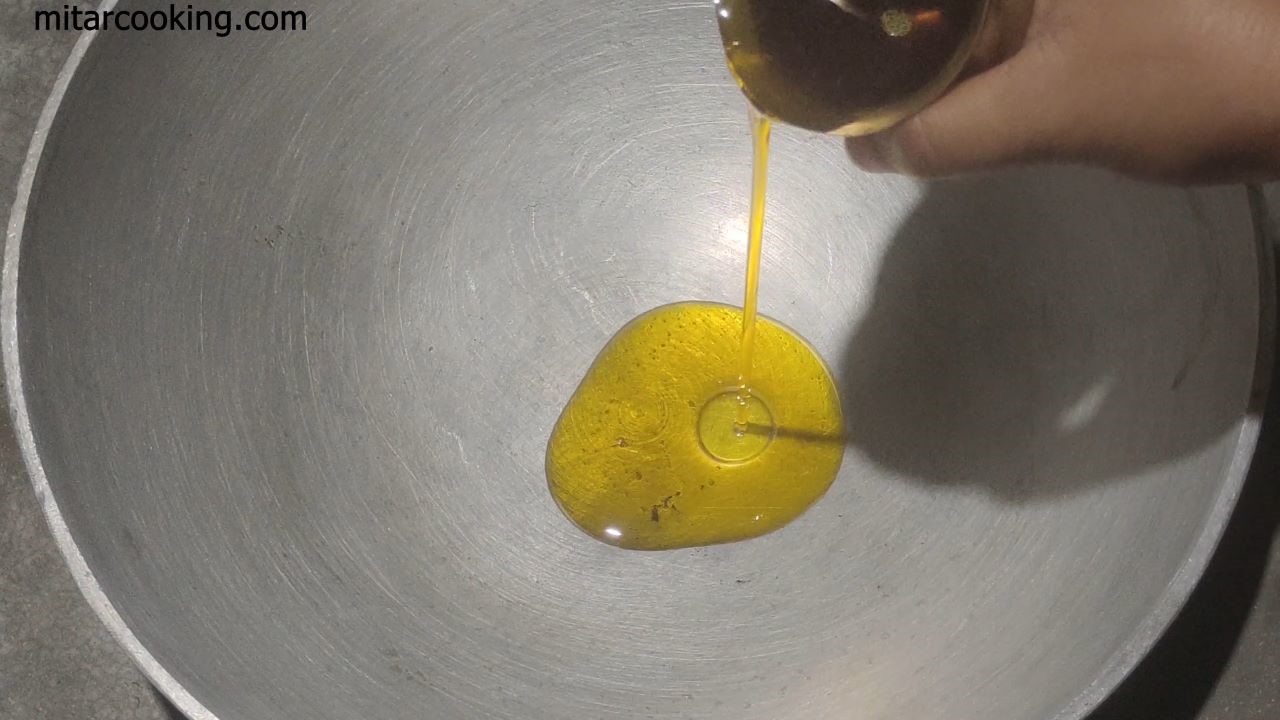
3. Add the lentils to the smoking oil and stir for 5 minutes.
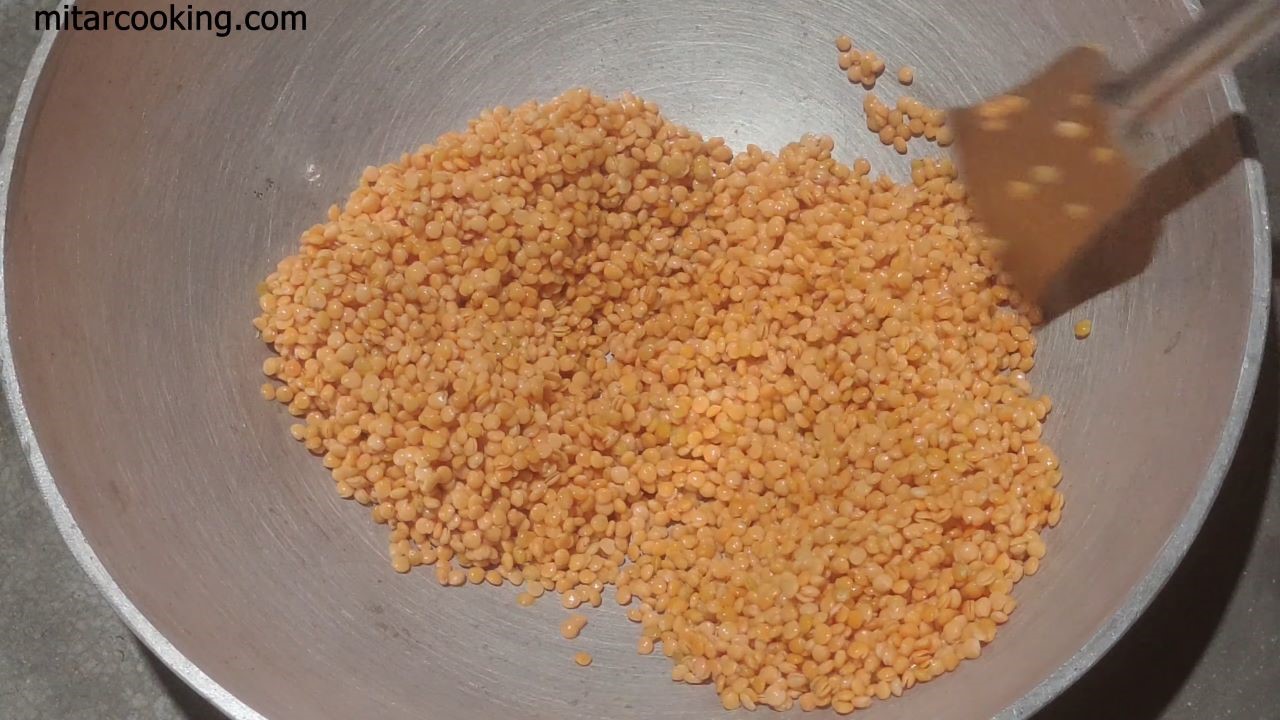
4. Add 2 cups of hot water to the lentils.
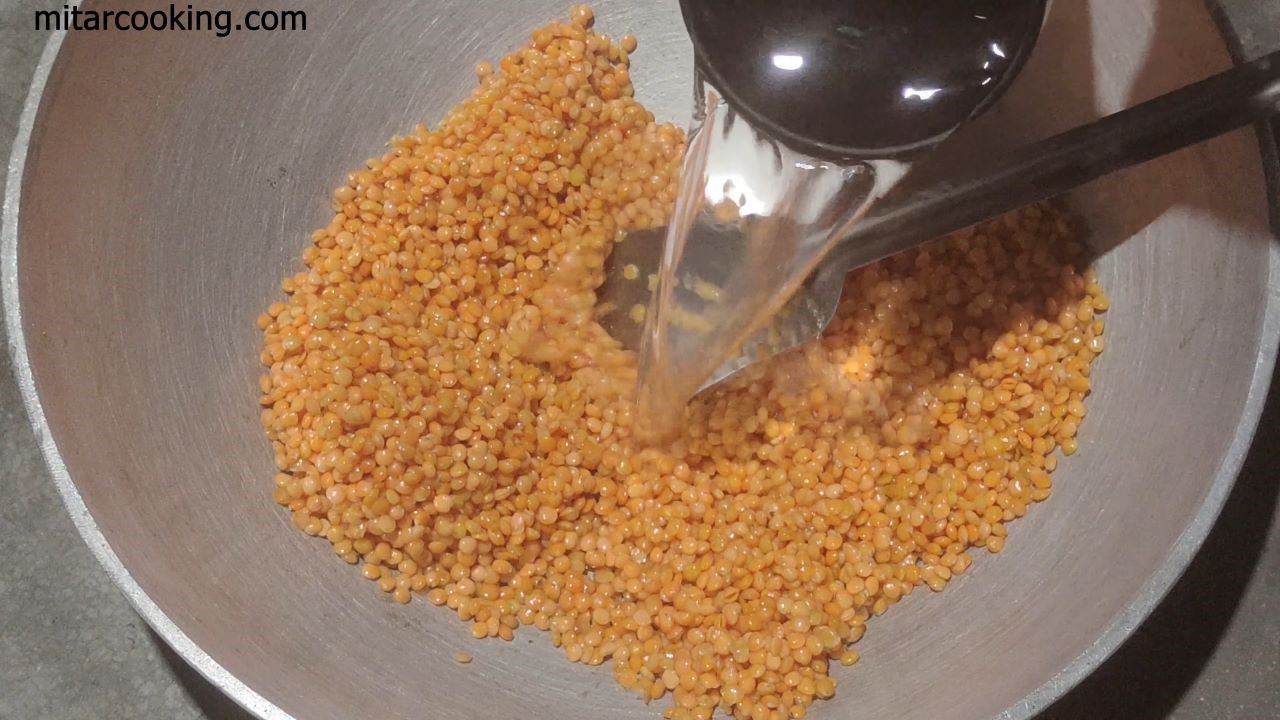
5. Once the water comes to a boil, ladle out the white foam collecting along the sides of the pan.
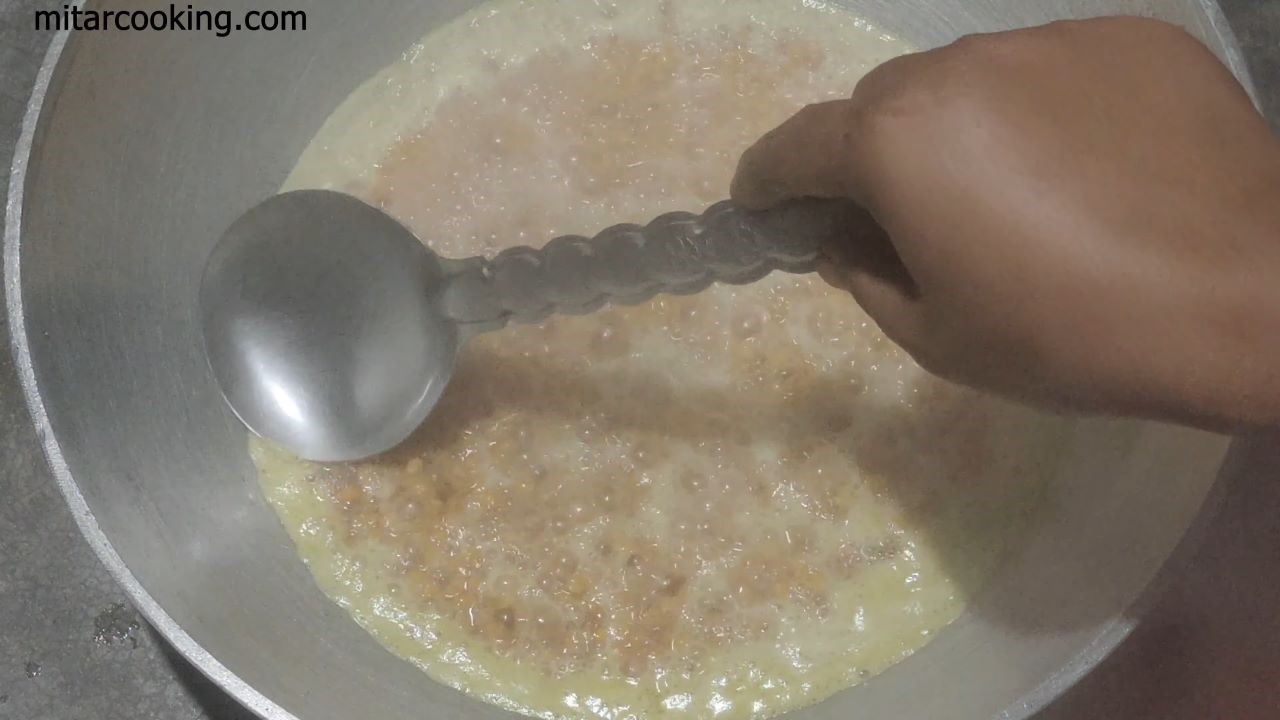
6. Add more water and cover the pan with a lid.
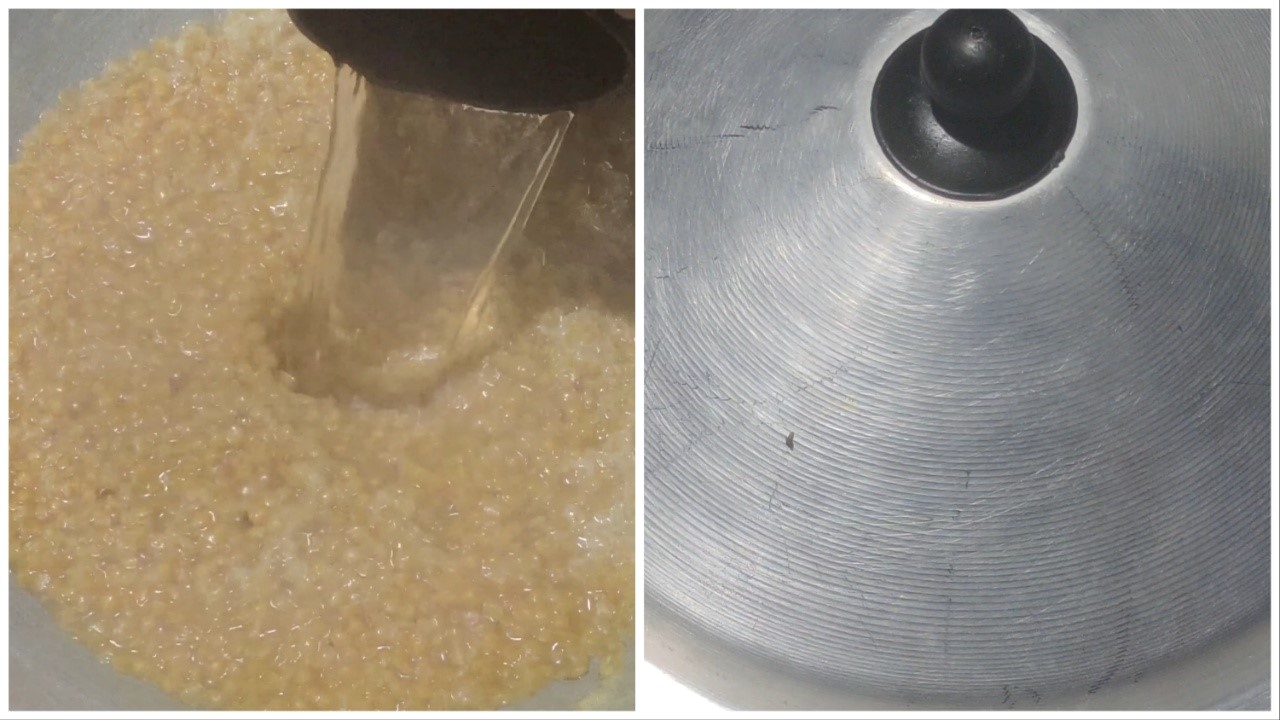
7. Remove the lid after 5 minutes.
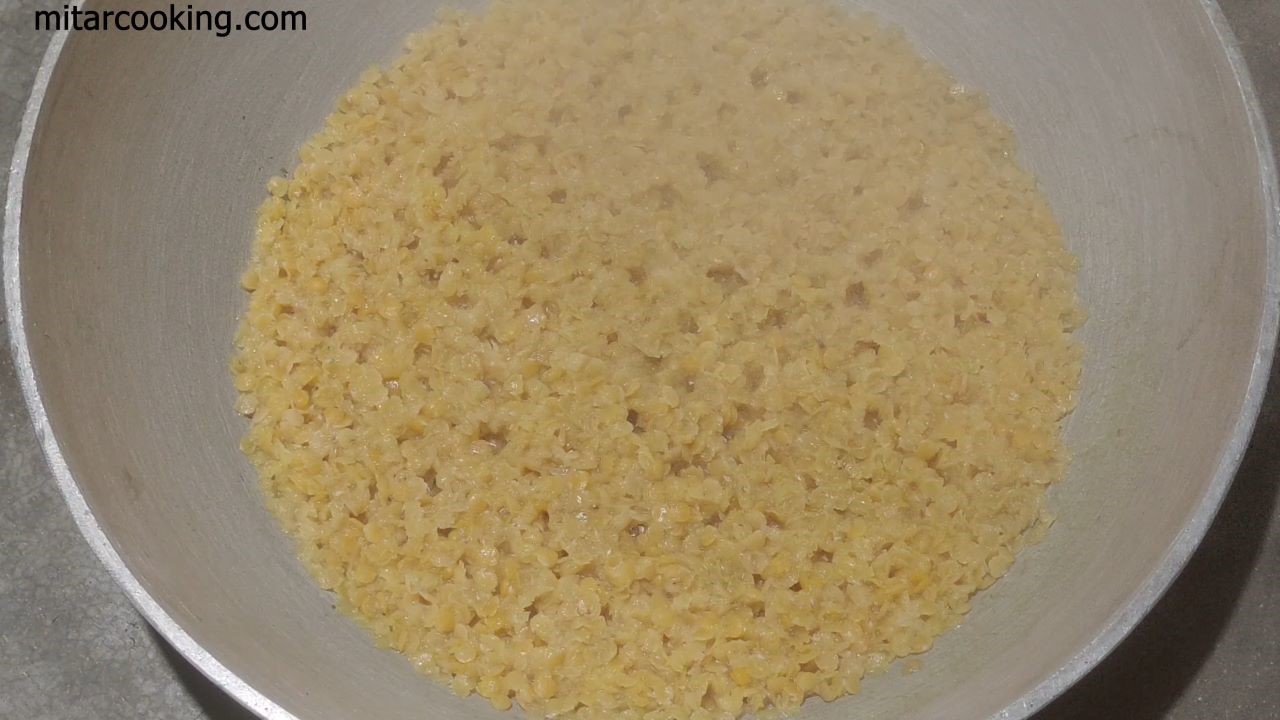
8. Add chopped tomatoes and ½ teaspoon of turmeric powder.
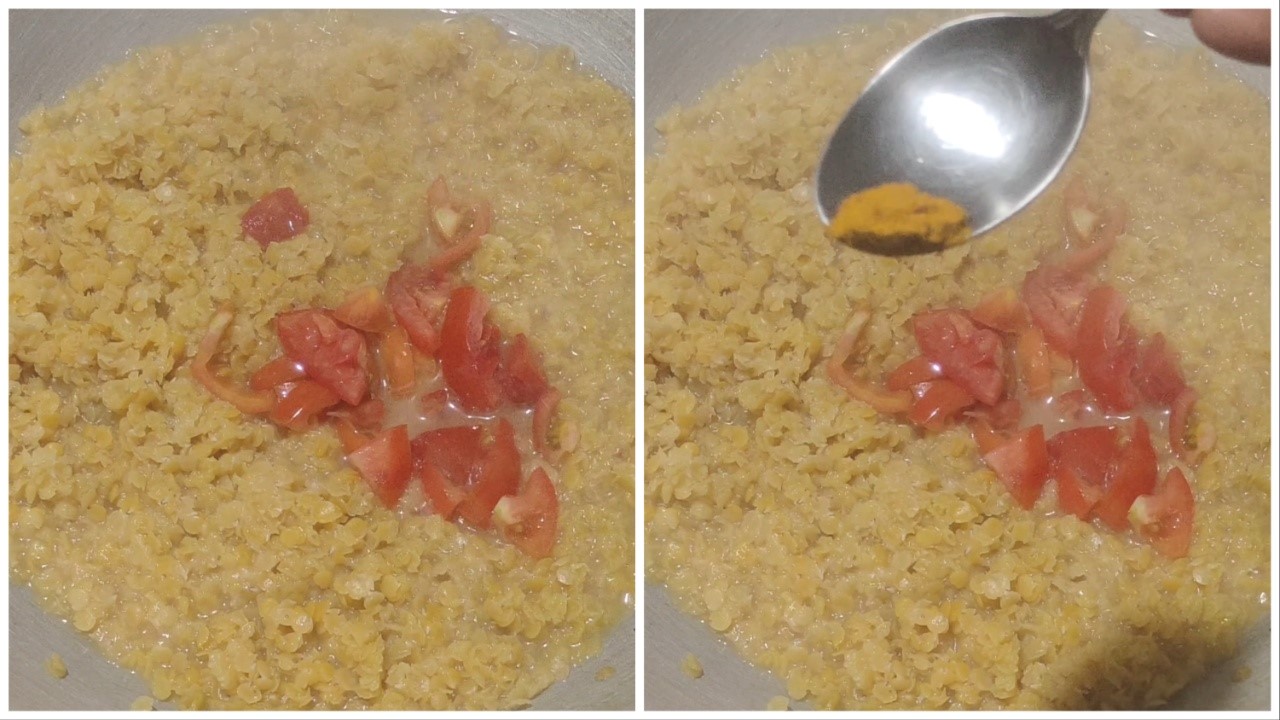
9. Smash the boiled lentils with a smasher. It won’t take much time or effort.
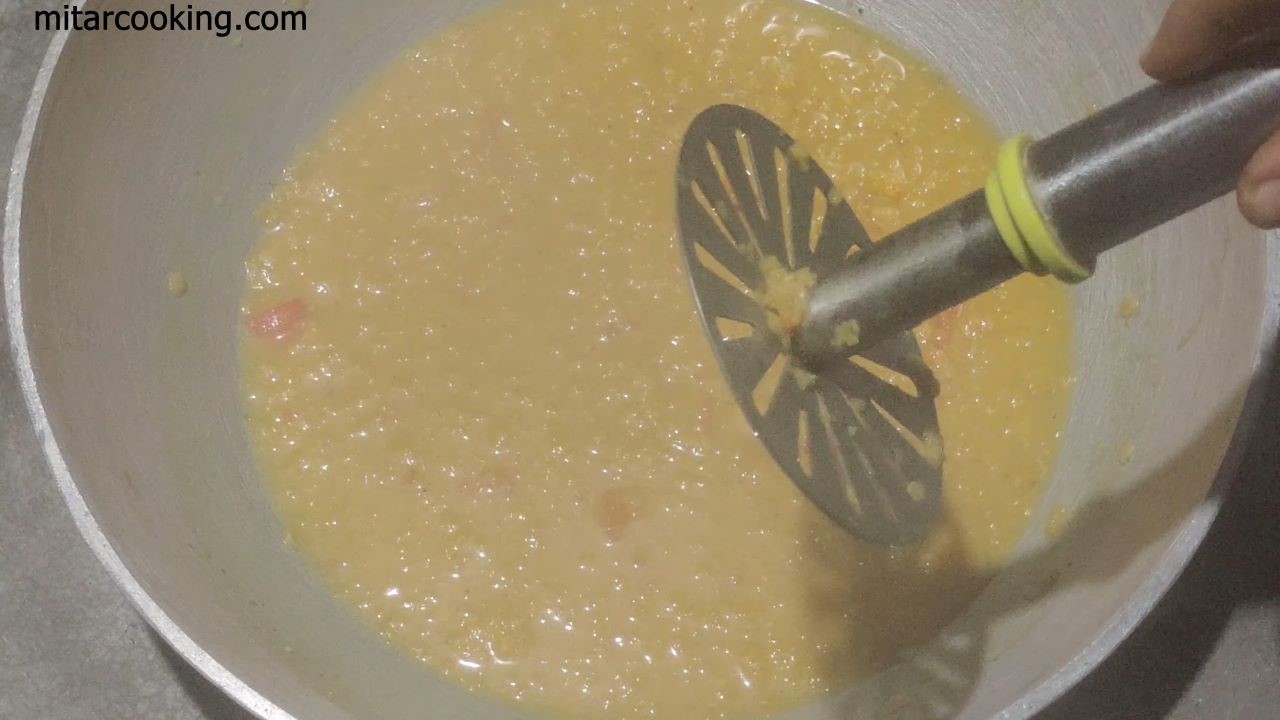
10. Add water to the boiled lentils as required.
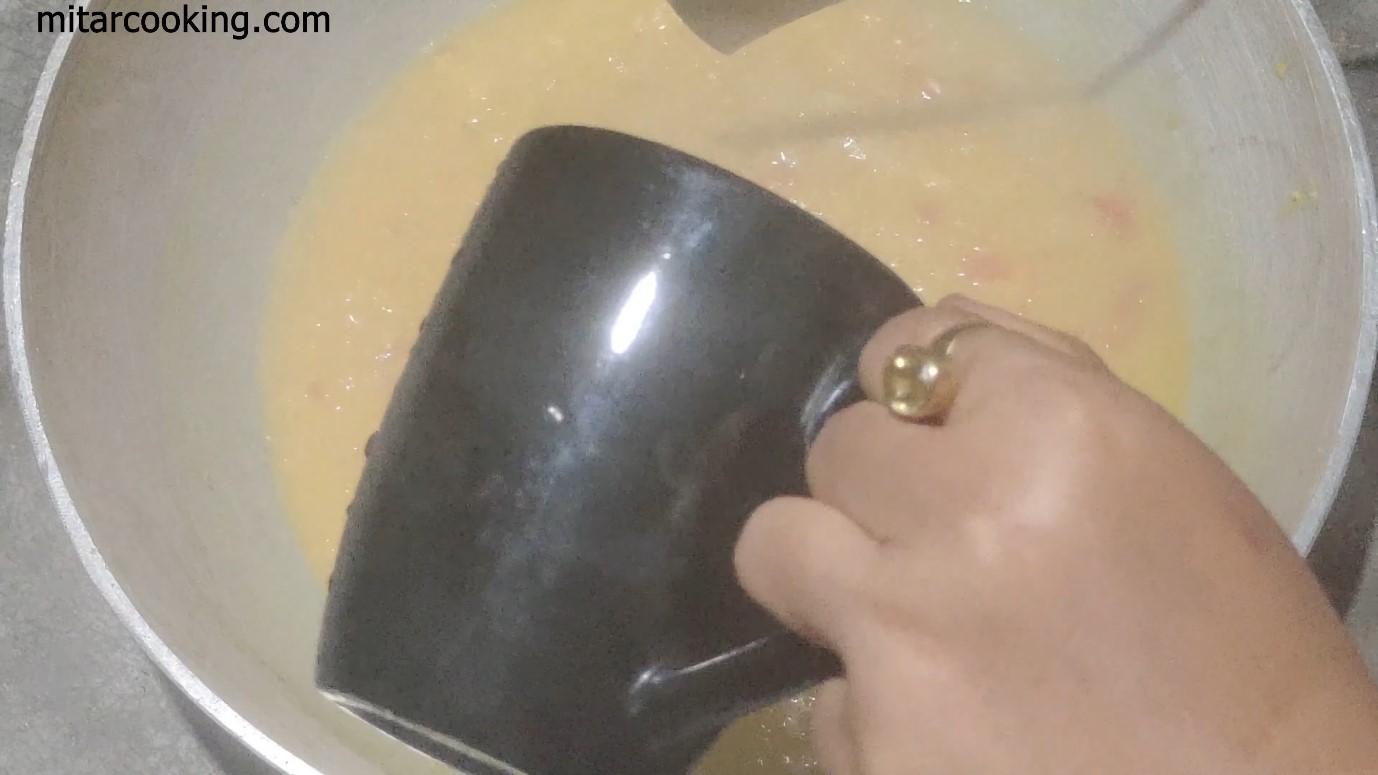
11. Add sliced onion, chopped garlic, red chilies, bay leaves, and mustard oil.
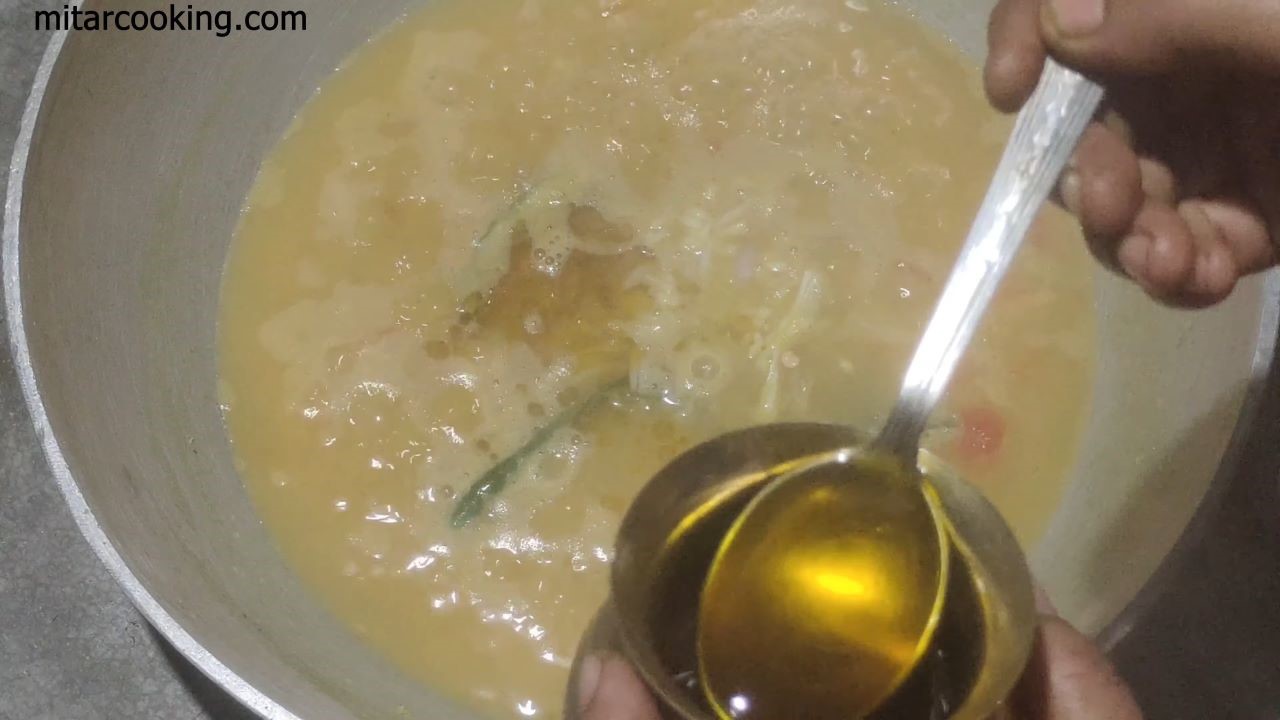
12. Add salt to taste and let it boil.
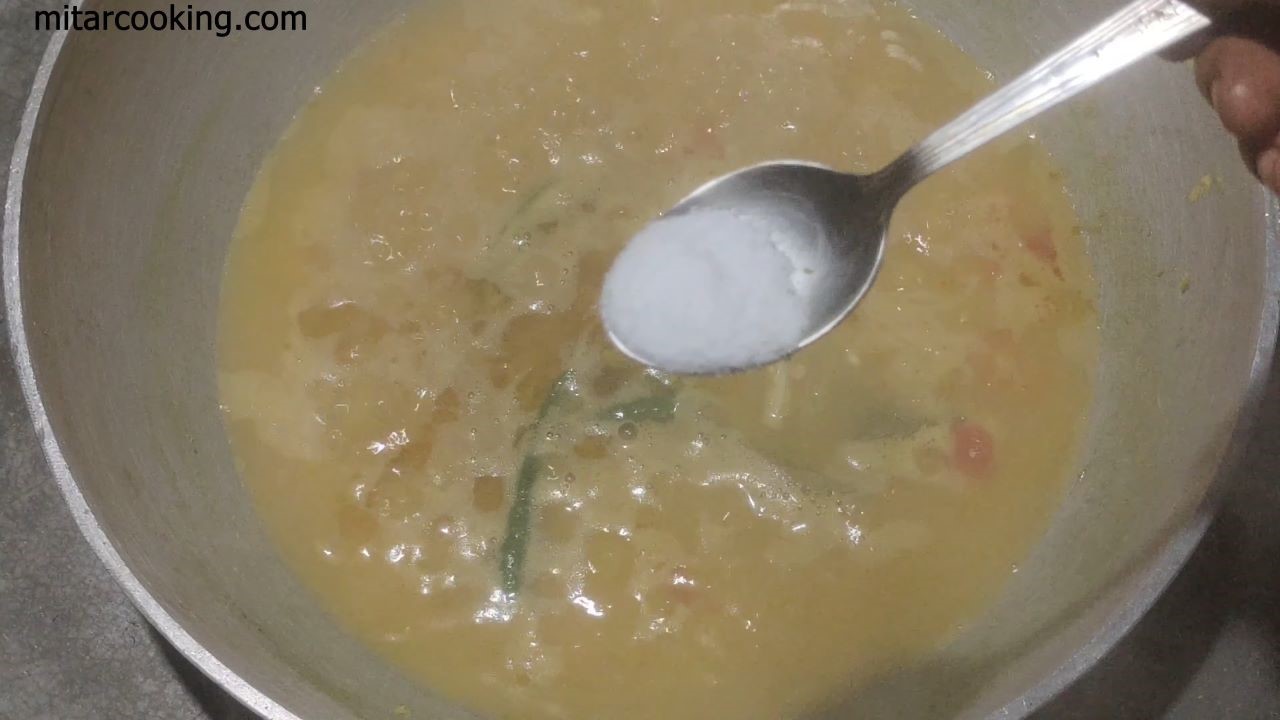
13. After desired texture is achieved, sprinkle coriander leaves.
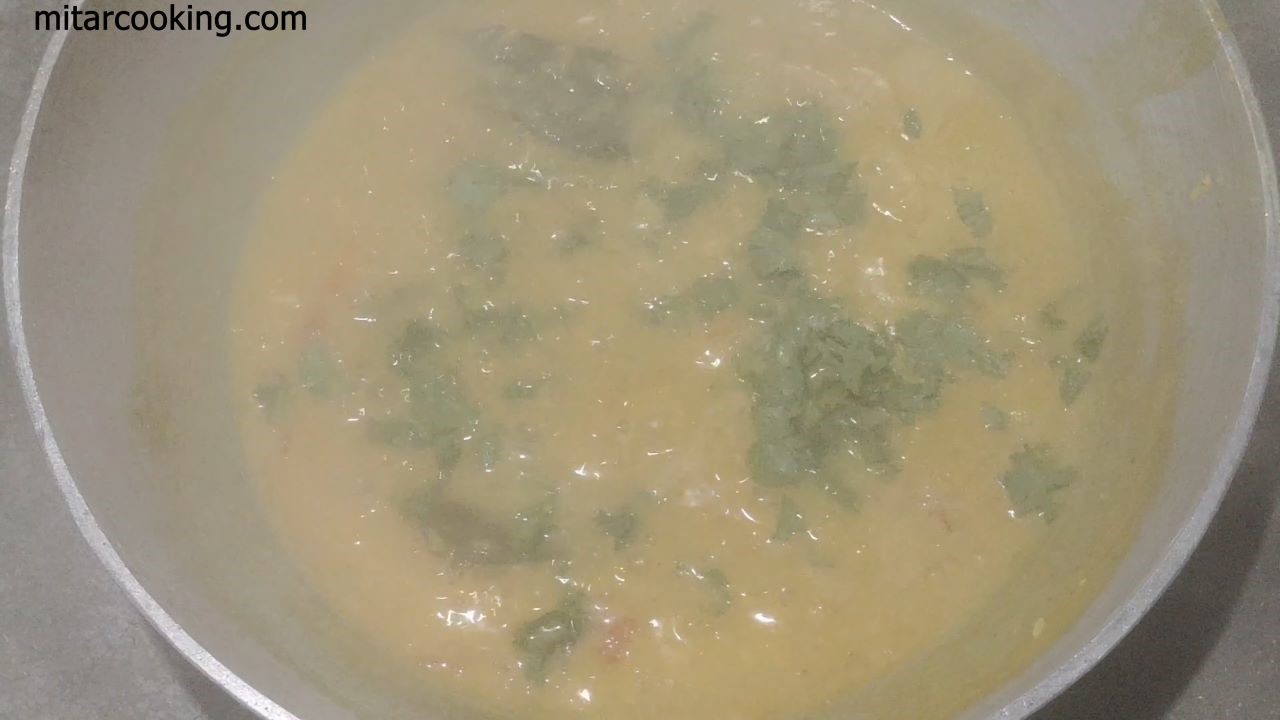
14. Home Style Masoor Dal is ready and pour it into a bowl.
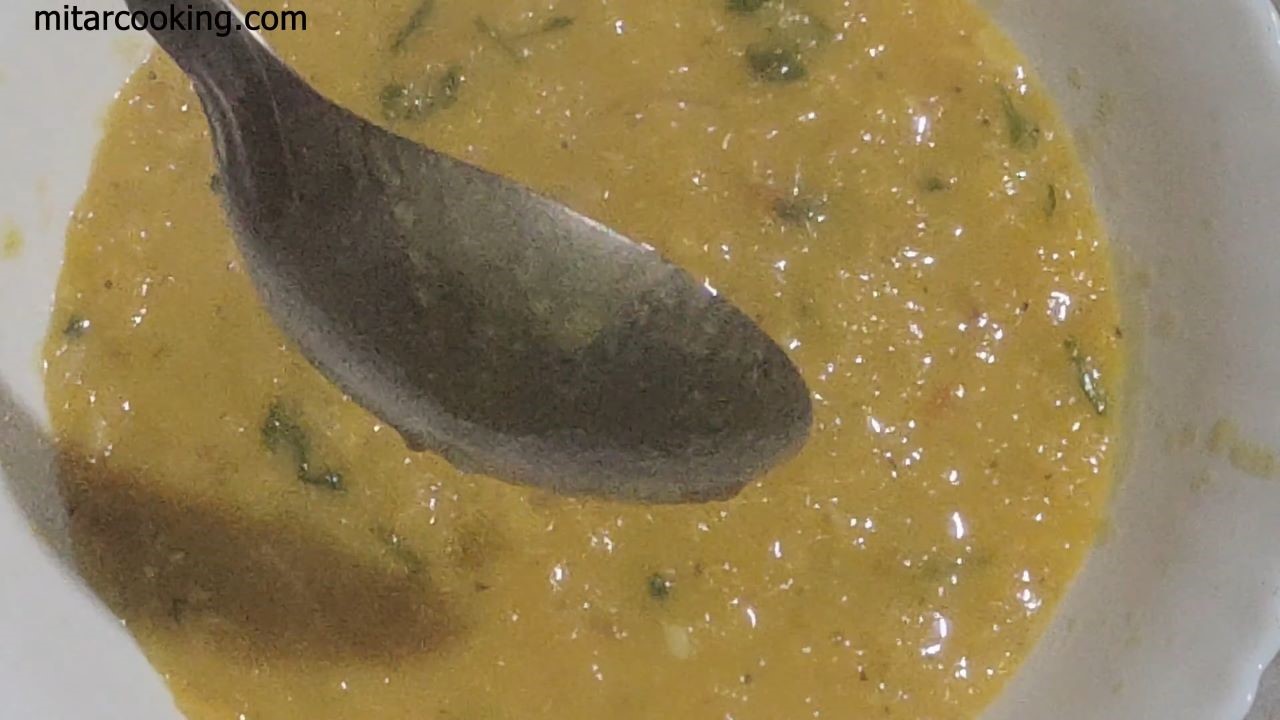
Pro Tips for Making Home Style Masoor Dal
Here are some pro tips and tricks that will enhance the cooking of the home-style masoor dal recipe:
Rinsing: Before cooking the dal, it should be thoroughly rinsed to remove all impurities and dirt.
Soaking: Soaking the dal before cooking reduces the cooking time. However, masoor dal cooks relatively quickly compared to other dals.
Water ratio: For cooking the home-style masoor dal, the water consistency should be 1:2. That means for every cup of dal, there should be 2 cups of water.
Spices and seasonings: I have used mustard oil to prepare this dish. Mustard oil gives an authentic and unique taste to masoor dal. However, you can also use vegetable oil or ghee. This is a simple dish, yet simplicity often hides sophistication.
Consistency: The consistency of the dal depends on personal preference. If you prefer a thinner consistency, cook it for a shorter time, whereas for a thicker consistency, cook it for a longer time.
Garnishing: You can garnish with fresh coriander. You can also add chopped onions or squeeze lemon juice according to your preference.
These tips enhance the overall taste of the dish.
What to Serve with Home Style Masoor Dal?
Here are some popular options to serve alongside Masoor Dal:
Steamed Rice: A classic choice is to serve Masoor Dal with steamed basmati rice. The dal can be poured over the rice or served side by side.
Roti or Chapati: Indian breads like roti or chapati are a great accompaniment to Masoor Dal. Their soft and chewy texture complements the dal’s flavors.
Naan: Naan, a leavened Indian bread, is another delicious choice. The slightly crispy exterior and fluffy interior of naan go well with the creamy dal.
Jeera Rice: Jeera rice, also known as cumin rice, is a fragrant rice dish made by tempering rice with cumin seeds. It adds a flavorful twist to your meal when served with Masoor Dal.
Paratha: Paratha, a flaky and layered Indian bread, can be stuffed with various fillings like potato, paneer, or spinach. It adds a delightful texture and taste when paired with the dal.
Vegetable Biryani: If you’re looking for a more elaborate option, vegetable biryani is a fantastic choice. The aromatic rice dish with layers of vegetables and spices complements the dal beautifully.
Remember, these are just suggestions, and you can mix and match based on your personal preferences.
How Does Home Style Masoor Dal Taste?
Home Style Masoor Dal has a delicious and comforting taste. Here’s a description of its taste profile:
Earthy and Nutty: Masoor dal has a distinct earthy and nutty flavor. It has a mild and slightly sweet taste, with subtle undertones of nuttiness that come from the lentils themselves.
Creamy and Smooth: When cooked, masoor dal has a creamy and smooth texture. It tends to break down and become soft, creating a thick and velvety consistency.
Mildly Spiced: Home Style Masoor Dal is typically seasoned with spices like turmeric, cumin, and garam masala. These spices add a gentle warmth and aroma to the dish without overpowering the natural flavors of the lentils.
Balanced Flavors: The combination of spices, along with the sweetness of onions and tomatoes, creates a well-balanced flavor profile. It’s not overly spicy or tangy but has a comforting and harmonious taste.
Comforting and Homely: Home Style Masoor Dal is often associated with a sense of comfort and homeliness. It’s a staple dish in many Indian households and brings a feeling of warmth and satisfaction when enjoyed.
The taste of Home Style Masoor Dal can vary slightly depending on personal preferences and the specific spice blend used in the recipe. Feel free to adjust the spices and seasonings to suit your taste.
Home Style Masoor Dal Alternatives
If you’re looking for alternatives to Home Style Masoor Dal, here are a few options that you might enjoy:
Chana Dal: Chana dal, made from split chickpeas, is another popular lentil in Indian cuisine. It has a slightly nutty flavor and a firmer texture compared to masoor dal. Chana dal is often cooked with spices and served as a side dish or as the main component of a meal.
Toor Dal: Toor dal, also known as pigeon peas, is a commonly used lentil in Indian cooking. It has a mild and slightly sweet taste with a creamy texture when cooked. Toor dal is versatile and can be used in various dal recipes or in combination with other lentils.
Moong Dal: Moong dal, made from split mung beans, has a delicate and mildly sweet flavor. It cooks quickly and has a smooth and creamy consistency. Moong dal is used in various dishes, including dal soups, khichdi (a rice and lentil dish), and lentil-based curries.
Urad Dal: Urad dal, made from black gram, has a rich and earthy flavor. It is commonly used in South Indian cuisine to make dishes like dosa (a fermented crepe) and idli (steamed rice cakes). Urad dal can also be used to prepare dal curries and lentil soups.
Masoor-Moong Dal: A combination of masoor dal and moong dal can create a flavorful and nutritious dal dish. The combination of these two lentils provides a nice balance of flavors and textures.
Mixed Dal: Mixing different types of lentils, such as masoor dal, chana dal, and moong dal, can result in a flavorful and wholesome dal dish. Combining lentils adds complexity to the flavor and texture of the dish.
Vegetable Dal: Adding a variety of vegetables like spinach, carrots, peas, or pumpkin to your dal can create a nutritious and hearty alternative. The vegetables add freshness, color, and additional nutrients to the dish.
Remember, these are just a few alternatives to Home Style Masoor Dal. Lentils offer versatility, so feel free to experiment with different combinations and flavors to find your favorite variation.
Recipe Card

Home Style Masoor Dal
Ingredients
- 200 grams Pink Lentil (cleaned properly)
- 1 piece Onion (sliced)
- 1 tablespoon Garlic (chopped)
- 1 piece Tomato (chopped)
- 2 pieces Bay leaves
- 4 pieces Green chilies
- 1 tablespoon Turmeric powder
- 1 tablespoon Coriander leaves
- 3 tablespoons Mustard oil
- Salt to taste
Instructions
- Lighten the clay stove or gas burner and place a kadai (deep pan) on it.
- Add 1 tablespoon of mustard oil to the hot kadai.
- Add the lentils to the hot oil and sauté for 5 minutes.
- Pour 2 cups of hot water into the lentils.
- Once the water comes to a boil, skim off the white foam that collects along the sides of the pan.
- Add more water if needed and cover the pan with a lid.
- Remove the lid after 5 minutes.
- Add chopped tomatoes and ½ teaspoon of turmeric powder.
- Mash the boiled lentils using a smasher, which won't take much time or effort.
- Adjust the consistency by adding water as required.
- Add sliced onions, chopped garlic, red chilies, bay leaves, and a drizzle of mustard oil.
- Season with salt according to your taste and let it simmer.
- Once the desired texture is achieved, garnish with fresh coriander leaves.
- Home Style Masoor Dal is ready! Serve it in a bowl.
Video
Notes
Nutrition Info (Estimation Only)
Conclusion
Home-style masoor dal is a staple recipe in Indian cuisine. Nothing can be more delicious than a perfect combination of dal and roti.
It offers a simple, tasty, and comforting dal that incorporates the creaminess of garlic, the sweetness of onions, and the tanginess of tomatoes.
When boiled together with dal and garnished with fresh coriander, it creates a heavenly recipe. It is a simple dish yet extraordinarily fulfilling.

